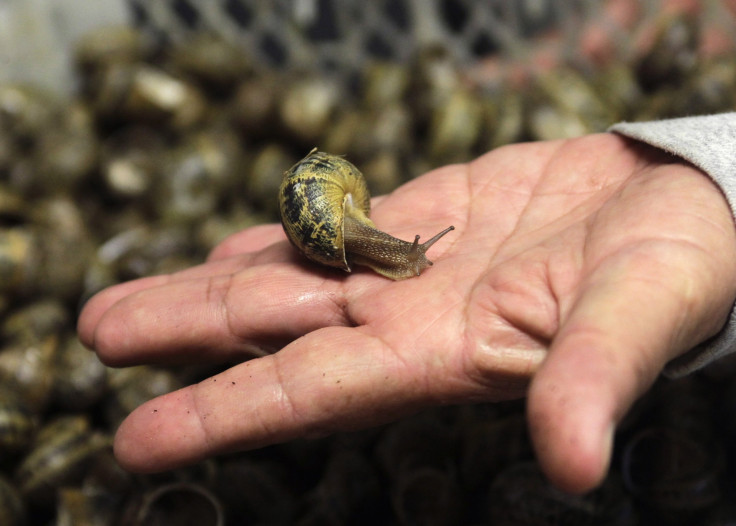In Ireland, Slimy Snails Tell An 8,000-Year-Old Story Of Human Migration From France

Scientists at the University of Nottingham, UK, have found genetic similarities between snails in Ireland and the Pyrenean region of southern France, leading them to conclude that the sluggish creatures could be part of an ancient human migration to Ireland from the Pyrenees thousands of years ago.
Despite being more than a thousand miles apart, snails in Ireland and the Pyrenees are genetically almost identical, the study showed. And, given the fact that snails are not known for their speed, scientists believe the creatures might have accompanied human migrants approximately 8,000 years ago.
“There is a very clear pattern, which is difficult to explain except by involving humans,” Dr. Angus Davison, Reader in Evolutionary Genetics at the University of Nottingham, said in a statement. “If the snails naturally colonized Ireland, you would expect to find some of the same genetic type in other areas of Europe, especially Britain. We just don’t find them.”
Davison said that Mesolithic or Stone Age humans in the Pyrenees ate snails and, perhaps, carried them along as food across the Atlantic Ocean while travelling to Ireland from the south of France.
“Although much of Europe contains snails with A and D lineages, by far the majority of Irish individuals have a lineage, C, that in mainland Europe was only found in a restricted region of the Eastern Pyrenees… the species has long been a food source in the Pyrenees, and the Garonne river that flanks the Pyrenees is an ancient human route to the Atlantic, then we suggest that the unusual distribution of the C lineage is most easily explained by the movements of Mesolithic humans,” said the research report, published in PLOS ONE journal on Wednesday.
Ireland is home to many plants and animals that are not found in Britain, and according to the researchers, if other Irish species also have “a similarly cryptic Lusitanian element,” then it might lead to more significant findings.
“You would think that anything that gets to Ireland would go through Britain, but it has been a longstanding mystery as to why Ireland is so different from Britain. For these snails, at least, the difference may be that they hitched a ride on a passing boat,” Davison said.
Some earlier genetic researches on humans also revealed clear evidence of links between the population of Ireland and southern Europe.
“The genetic patterns in humans are there, but are much weaker. You see it in blood groups, in Y chromosomes and some diseases,” population geneticist Dan Bradley from Trinity College, Dublin, told BBC News. “In order to really understand migration patterns we need more ancient DNA from different species such as small mammals.”
© Copyright IBTimes 2025. All rights reserved.




















